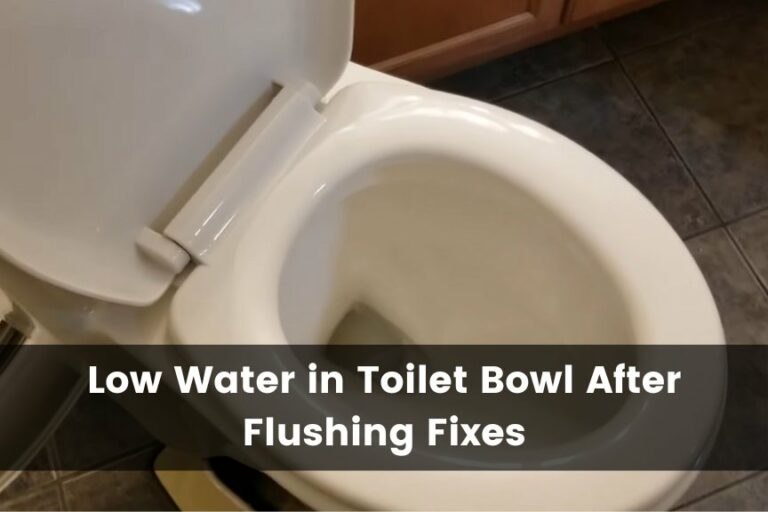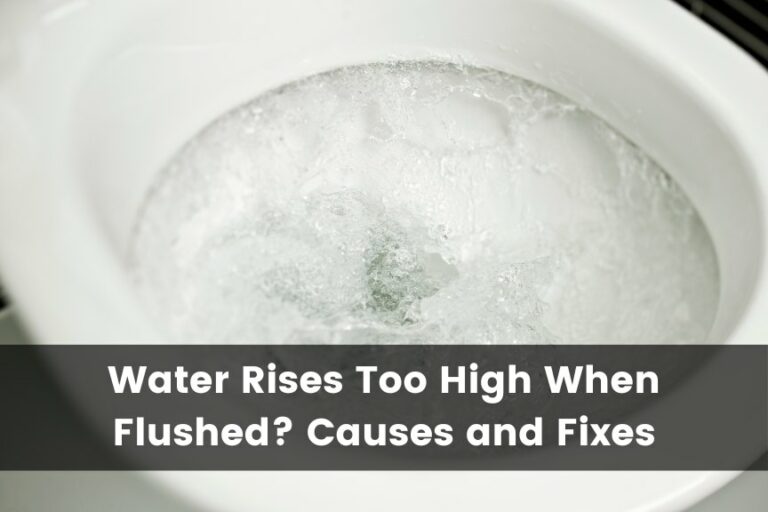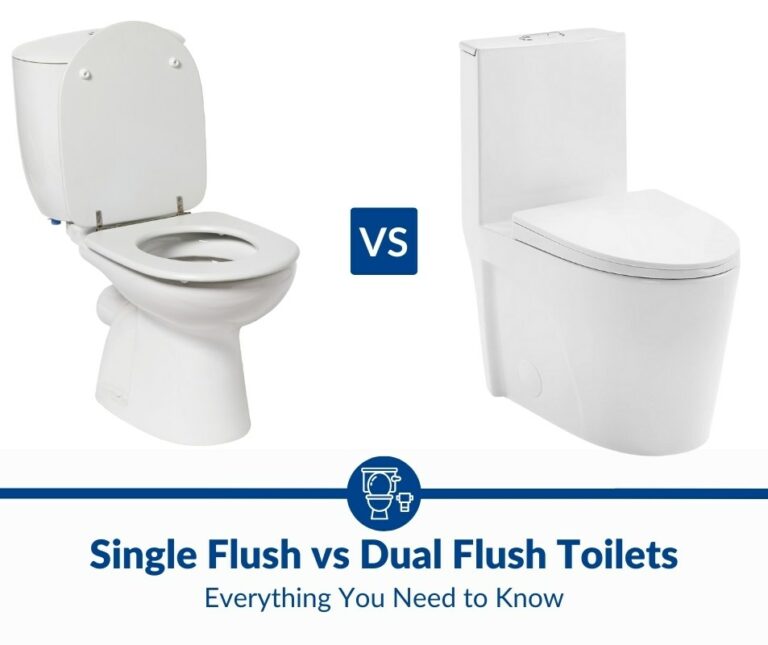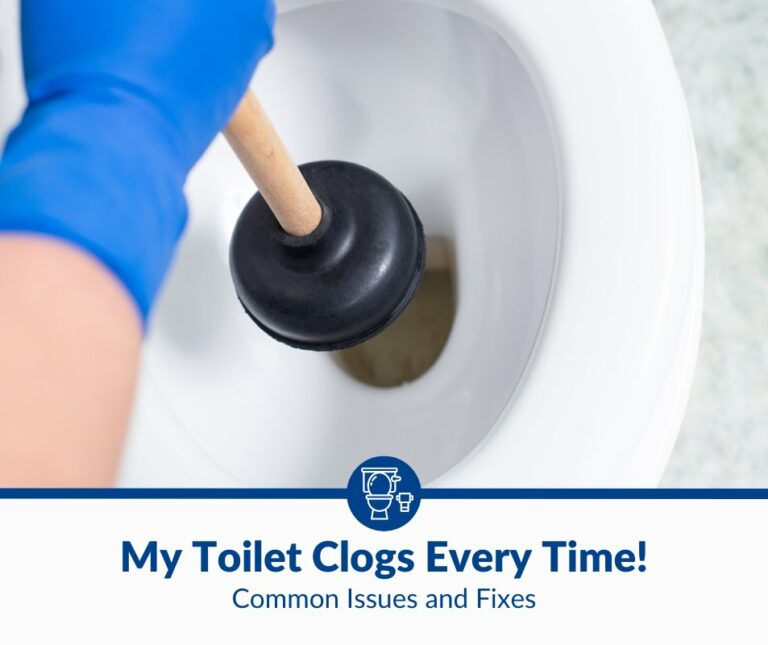Does WD-40 Remove Hard Water Stains in Toilet?
Hard water stains in your toilet can be an eyesore and difficult to remove. One product that is often recommended for cleaning hard water stains is WD-40. But does WD-40 actually work to remove these stains?
WD-40 can remove hard water stains from a toilet bowl. It works by softening the mineral and lime deposits that cause hard water stains in the bowl, making them easier to scrub away. A few sprays of WD-40, followed by a few minutes of good scrubbing, should do the trick.
The rest of this article will discuss how to use WD-40 to effectively remove hard water stains from your toilet, as well as some other tips and tricks for keeping your toilet clean. So, let’s get started!
How To Remove Hard Water Stains in Toilet With WD-40
WD-40 is more than just a tool for loosening stubborn bolts and freeing up stuck parts. This penetrating oil is known for loosening and breaking down tough grime and build-up. Its powerful formula can also break down tough grime and build-up, including hard water stains in your toilet, making them easier to scrub.
Removing hard water stains from your toilet using this product is pretty straightforward, but it should be done safely and effectively. If you live in an area with hard water, removing hard water stains can seem like an endless battle, and you’ll be pleased to know that WD-40 can be part of your cleaning arsenal.
Here’s what you need to do:
- Get some WD-40. The first step in the journey to a clean and shiny toilet is to get some WD-40. The versatility of this product means it can be easily found, so head to the store or hop online and grab a can of WD-40.
- Flush your toilet to clear out any debris or waste. Now that you’ve got your WD-40 in hand, you’re ready to remove those hard water stains. Flush your toilet to give you a clean slate to work with and make it easier to see the hard water stains that need to be removed. Let the water settle in the bowl before moving on to the next step.
- Spray WD-40 directly onto the hard water stains in your toilet bowl. Once the water has settled, you’ll be able to see where the hard water stains are located. Spray a few generous coats of WD-40 onto those areas, including the rim, and under the rim. You’ll want to use enough WD-40 to cover the hard water stains completely.
- Let it sit for about 5-15 minutes. Give the WD-40 time to work its magic and break down the hard water stains, making them easier to scrub off. Depending on how tough the stains are, you may want to let the WD-40 sit for longer to ensure it has enough time to work.
- Scrub away the hard water deposits. After the WD-40 has had a chance to sit, it’s time to scrub! Use a toilet brush to scrub the inside of the bowl, making sure to get under the rim and into all the nooks and crannies. You may need to apply additional WD-40 to particularly stubborn areas.
- Wipe the bowl with a clean cloth. Once you’re finished scrubbing, use a dry cloth to wipe the entire inside of the toilet bowl and remove any remaining WD-40. This is because WD-40 contains harmful components that will kill off the beneficial bacteria that help break down waste in your toilet.
- Flush the toilet. After wiping down the toilet bowl, flush to rinse away any debris and remaining WD-40. You’ll be able to see the results immediately, as the hard water stains will have been completely removed.
- If you still see some stains remaining, you can use a pumice stone or a hard-bristled scrub brush to remove the remaining residue. These tools can be especially effective at removing tough stains that are harder to remove with a toilet brush alone.
- Flush the toilet one more time. After scrubbing, flush the toilet once more to rinse any remaining residue. This will help ensure that your toilet is free of any harsh chemicals or residues that could be harmful to your health. For an extra-clean finish, you can follow up with a toilet bowl cleaner or use a disinfectant wipe to wipe down the entire inside of the bowl.
Does WD-40 Remove Rust Stains From Toilets?
WD-40 can remove rust stains from toilets. In fact, it works better than many commercial rust removers because it is a powerful penetrating oil that can get deep into the pores of the porcelain to dissolve the rust stains.
Since rust stains are notoriously difficult to remove, many people turn to WD-40 as a reliable and trusted solution. This multi-purpose product was initially developed for use in the aerospace industry to protect metal parts from rust and corrosion.
It was later discovered that it is also helpful for various household tasks, including removing rust stains from toilets, and has since become a household staple. If you’re dealing with tough rust stains, WD-40 is definitely worth a try. To use WD-40 to remove rust in your toilet, follow the same steps outlined above.
Why WD-40 Is Effective at Removing Hard Water Stains and Rust
As mentioned before, WD-40 is a penetrating oil designed to loosen and break down tough grime and build-up. Its ability to penetrate tight spaces and dissolve stuck-on dirt and debris is ideal for removing hard water stains and rust from toilets.
The efficacy of WD-40 in removing rust from toilets is due to its components, which include petroleum distillates and long-chain hydrocarbons. Another critical ingredient is a solvent called xylene. Xylene is a powerful solvent capable of dissolving many substances, including dirt, grease, and rust.
When applied to hard water stains or rust, xylene breaks down the bonds between the stain and the surface it adheres to. This makes it easier to scrub away the stain and get your toilet looking clean and shiny again.
Furthermore, WD-40 also contains several other ingredients that help to improve its performance. For example, it includes lubricants that help to prevent further build-up of hard water stains and rust. It also contains corrosion inhibitors that help to protect the surface of your toilet from future damage.
These ingredients make WD-40 an effective and reliable tool for removing hard water stains and rust from toilets. Its ability to loosen and dissolve tough stains and its protective properties make it a go-to choice for many people looking to keep their toilets clean and stain-free.
Is It Safe To Use WD-40 in the toilet?
It’s not safe to use WD-40 in a toilet. While it may seem like a quick and easy solution to remove hard water stains and rust, WD-40 is a powerful chemical product that should be used in well-ventilated areas and with the proper safety precautions.
Here are a few reasons:
- WD-40 releases harmful vapors when applied: WD-40 is a chemical product that releases vapors when it comes into contact with water. These vapors can harm the lungs when inhaled, especially in enclosed spaces such as a bathroom. Inhaling these vapors can cause respiratory issues, dizziness, and headaches.
- WD-40 can cause skin irritation: WD-40 is not designed to come into contact with skin and can cause irritation if it does. Suppose you accidentally get WD-40 on your hands or any other sensitive areas. In that case, it is important to wash it off immediately to avoid irritation.
- It is harmful to the beneficial bacteria: As mentioned previously, the bacteria in your toilet or septic system play a crucial role in breaking down waste and helping to keep your system functioning correctly. WD-40 contains chemicals that can kill off these beneficial bacteria. This can lead to problems with these systems, negatively impacting the environment.
- WD-40 is highly flammable: WD-40 is a flammable liquid, and using it in the toilet could present a fire hazard. Keeping all flammable products from open flames or any other heat source is important.
- WD-40 is not biodegradable. This product does not break down naturally in the environment. Any WD-40 released into the environment, whether through accidental spills or the improper disposal of empty containers, can persist in the environment for long periods.
- It is not a renewable resource: WD-40 is made from non-renewable resources such as petroleum, and its production contributes to the depletion of these finite resources.
Safety Precautions for Using WD-40 in Toilets
Despite the risks, some people may still be tempted to use WD-40 in their toilets to remove hard water stains and rust. If you do choose to use WD-40 in your toilet, it is important that you take the proper safety precautions.
Here are a few tips to keep in mind when using WD-40 in toilets:
- Always wear protective gear: When using WD-40 in your toilet, it’s important to wear protective gear such as gloves and a face mask. This will help to protect you from the potentially harmful vapors that WD-40 emits.
- Only use in well-ventilated areas: WD-40 releases vapors when spraying, which can be harmful to inhale. To reduce your risk of inhaling these vapors, using WD-40 in a well-ventilated toilet is vital.
- Do not flush it down the Toilet: Flushing WD-40 down the Toilet can kill off the beneficial bacteria in your septic system and lead to environmental contamination. Wipe away the WD-40 with a cloth after scrubbing, and then dispose of the cloth properly.
- Use it sparingly. WD-40 is a powerful chemical product that should not be used more than necessary. Apply as little WD-40 as possible to the affected area and only use it when other methods, such as scrubbing and cleaning, have been unsuccessful
- Keep it away from heat and flames: WD-40 is a flammable liquid, and it is important to keep it away from any sources of heat or open flames. Do not use WD-40 near a stove, fireplace, or other heat sources, and do not smoke while using it.
Safer and More Eco-Friendly WD-40 Alternatives
Vinegar
Vinegar is a safe and eco-friendly alternative to WD-40 for removing hard water stains and rust in the toilet. Unlike WD-40, vinegar is a natural product made from fermented grain or other plant-based materials. It is biodegradable and breaks down naturally in the environment, making it a safer and more environmentally friendly choice compared to chemical products like WD-40.
This powerful cleaning agent will not harm the beneficial bacteria in your toilet or septic system and can be safely used in the home without any risk of fire or chemical burns. It effectively removes hard water stains and rust from various surfaces, including toilet bowls. Its acidity helps to dissolve mineral deposits and loosen stains, making it easy to wipe away.
Here’s a step-by-step guide on removing hard water stains and rust in the toilet using vinegar:
- Turn off the water supply to the toilet. You will need to turn off the water supply to the toilet to prevent water from entering the bowl while you are cleaning.
- Remove any remaining water from the toilet bowl. Use a small bucket or cup to scoop water from the toilet bowl. Alternatively, you can use a sponge or towel to soak up the water and remove it.
- Pour vinegar into the toilet bowl. Once you have removed as much water as possible, pour a generous amount of vinegar into the toilet bowl up to the waterline. Be sure to cover the stains and rust completely.
- Let the vinegar sit. Allow the vinegar to sit in the toilet bowl for at least 30 minutes to work its magic. You can leave it for longer if the stains and rust are particularly stubborn.
- Scrub the toilet bowl. Once the vinegar has had enough time to work its magic, use a toilet brush or scrubbing brush to scrub the toilet bowl, making sure to pay extra attention to the stains and rust.
- Rinse away the vinegar solution. Once the stains and rust have been removed, flush the toilet to rinse away the solution and any dirt or grime loosened.
- Repeat as necessary. You may need to repeat the process multiple times for particularly stubborn stains and rust. After each cleaning session, flush the toilet to rinse away the vinegar solution.
Vinegar and Baking Soda
Another alternative to WD-40 for removing rust and hard water stains in the toilet is a combination of vinegar and baking soda. This combination creates a powerful cleaning agent that is effective at removing tough stains and rust and safe to use in the home without any risk of fire or chemical burns.
Follow these steps to remove hard water stains and rust in the toilet using vinegar and baking soda:
- Empty the toilet bowl. Start by emptying the toilet bowl of as much water as possible. You can scoop it out with a small bucket or cup or use a sponge or towel to soak up the water.
- Pour a cup of vinegar into the toilet bowl. Once you have removed most of the water, pour a generous amount of vinegar into the toilet bowl up to the waterline. Ensure the stains and rust are entirely covered, and let it sit for 5 minutes to allow it to penetrate the stains and minerals.
- Add ½ cup (120 ml) of baking soda. After 5 minutes, slowly add ½ cup (120 ml) of baking soda to the toilet bowl and let it sit for 10 to 20 minutes. The baking soda will react with the vinegar, creating a fizzing action that will help to lift the stains and minerals from the surface of the toilet bowl.
- Swish the water to mix the solution. Mix the baking soda and vinegar with a scrubbing brush to swish the water in the bowl. Ensure that the solution reaches the entire surface of the bowl, including the stained and rusty areas.
- Scrub the toilet bowl. Using a toilet brush, scrub the inside of the bowl, paying extra attention to the areas where stains and rust are present. Take your time to ensure that they are entirely removed.
- Flush the toilet. Once you have finished scrubbing the entire bowl, flush the toilet several times to rinse away the cleaning solution.
- Repeat the process. You may need to repeat the process a few times if the stains and rust are particularly stubborn. Be patient and keep scrubbing until the stains are completely gone.
- To finish, you can use a toilet bowl cleaner or a disinfectant to thoroughly clean the bowl and ensure it is left sparkling.
Conclusion
WD-40 is an effective tool for removing the toilet’s hard water stains and rust. However, it is important to consider any potential risks of using this chemical-based product and any possible damage it may cause.
Vinegar and baking soda are safer alternatives that can be just as effective when used correctly. Combining these two everyday household staples allows you to easily remove tough stains and rust without any risks associated with WD-40.
Follow the steps outlined in this article, and you’ll soon have a sparkling-clean toilet bowl.
Happy cleaning!







